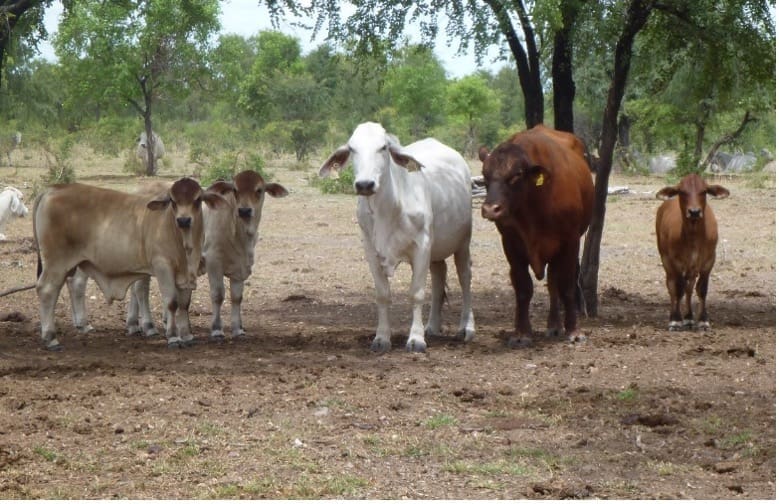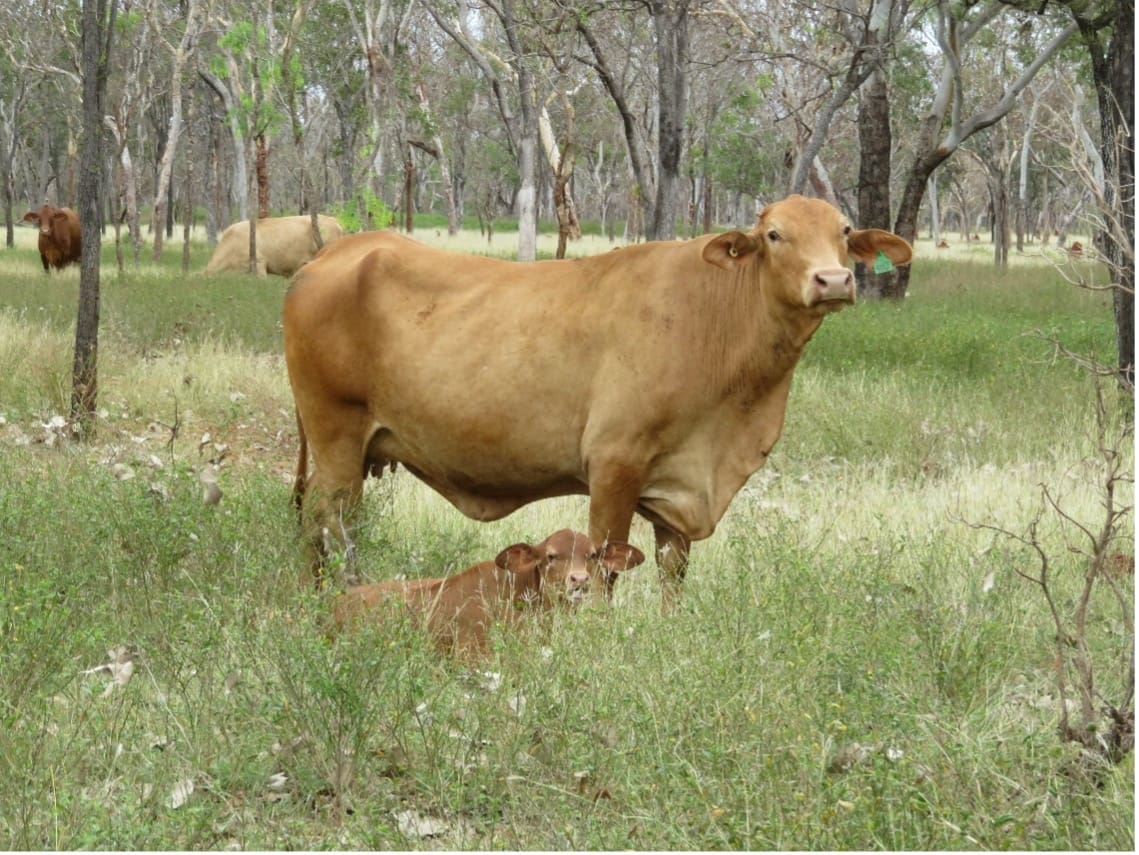THE results of a study on the long term performance of females in the Senepol crossbreeding project undertaken by the NT Department of Industry Tourism and Trade (DITT) were recently published in the Animal Production Science journal.
The results give northern cattle producers information that is useful in deciding whether to use crossbreeding to target multiple markets (eg. live export and the Australian domestic market).
The study was conducted in the Katherine region of the Northern Territory over 11 years and compared the performance of F1 Senepol x Brahman (F1 Senepol) females to that of Brahmans.
It found that F1 Senepol heifers outperformed Brahman heifers, and that mature cow performance of the breeds was similar.
The impetus for the study was that the department had identified that the strong reliance on the live export market was a risk for the northern cattle industry. It was speculated that if anything went wrong with this market, then northern producers would likely be adversely affected by having to send Brahman cattle to markets in southern Australia where they are less preferred due to perceptions of lower meat tenderness than Bos taurus and crossbred cattle. This scenario actually played out with the 2011 live export ban, 2 years after the study commenced.
A potential solution to this issue is for northern cattle producers to produce cattle that have good meat quality and still have good stress resistance. This would give them more marketing options and they would be less vulnerable to live export market fluctuations, as their cattle would be in demand in both the live export and Australian domestic markets.
While some Brahmans have good meat tenderness and improvement can be made through selection, the quickest way to improve the meat tenderness of Brahmans is to crossbreed with Bos taurus breeds that have better meat quality. However, there are many stories of properties importing southern Bos taurus bulls to the north, only to have them struggle to survive and be productive due to lack of resistance to the stressful environment (heat, humidity, parasites, poor pasture quality, long distances to walk etc.). Therefore, it was decided that using bulls of a tropically adapted Bos taurus breed known to have better meat quality, such as Senepols, might be a solution. It is likely that similar results would result from using bulls of other tropically adapted Bos taurus breeds (eg. Belmont Reds), but only one breed could be used to enable sufficient numbers for valid scientific comparisons, and the Senepol was chosen.
The department began a research program in 2008 under the leadership of NT DITT beef researcher, Tim Schatz, to investigate whether crossbreeding with Senepols, might be an effective way for north Australian cattle producers with Brahman herds to quickly (in one generation) produce cattle that perform well under harsh northern conditions, and are suited to both the domestic and South East Asian live export markets.
Method: Senepol and Brahman bulls were bred to Brahman cows in NT DITT herds at the Victoria River Research Station (aka Kidman Springs) and leased paddocks on Manbulloo station near Katherine. Fourteen Senepol and 21 Brahman bulls were used to breed 4 year groups of calves for the study. The F1 Senepol (total n = 317) and Brahman (total n = 499) female progeny were then run together at Manbulloo, and their performance compared using measures for growth, reproduction and survival. Heifers were first mated as 2-year-olds and the study concluded when the oldest year-group was 9.5 years old. The cattle were mustered twice a year for data collection and to wean calves.

A Senepol bull, Brahman cow and F1 Senepol x Brahman cross calves at Victoria River Research Station (Kidman Springs), NT.
Summary of key results of female studies:
- F1 Senepol females were heavier than Brahmans at weaning (+25 kg) and at each subsequent muster.
- Mature F1 Senepol cows were on average 50 kg heavier, 2 cm taller and had 2.4 mm lower P8 fat depth than Brahman cows.
- The average maiden heifer pregnancy rate of the 4 year-groups was 19 percentage units higher in F1 Senepols (F1 Senepol = 89%, Brahman = 70%), but there were no significant differences in pregnancy rates between breeds at any other ages (ie. as mature cows).
- Calf loss was higher for Brahman heifers calving for the first time (Brahman = 14%, F1 Senepol = 6%), but there were no significant differences in calf loss between breeds at any other ages.
- The average annual weaning rates for the breeds were similar (F1 Senepol = 59%, Brahman = 57%), as was the mean annual liveweight production (change in cow liveweight plus weight of calf weaned).
- The average weight of calves weaned were heavier from F1 Senepols for first lactation heifers and 5.5-year-old cows (by 6 and 10 kg, respectively), but only slightly heavier in all other years.
- There were no significant differences between breeds in cumulative mortality rates either between year-groups or overall.
Results on the performance of males and meat quality studies have been published previously.
They showed that in comparison to Brahman steers, that F1 Senepol steers were an average of 32 kg heavier at turnoff (at about 18 months of age) and had more tender meat (determined by shear force testing). Their carcases graded better in the Meat Standards Australia grading system and they performed better in an Indonesian feedlot.
While these results demonstrate advantages from producing F1 Senepol steers, northern cattle producers will want to know how the female progeny are likely to perform under harsh northern conditions when retained as breeding females. The results from this study provide this information.
They show that F1 Senepol heifers outperformed Brahman heifers, and that mature cow performance of the breeds was similar.
These findings should reassure north Australian cattle producers who are considering crossbreeding with a tropically adapted Bos taurus breed that the performance of crossbred breeder herds is likely to be as good as that of their current Brahman herds.
To view published study click here

